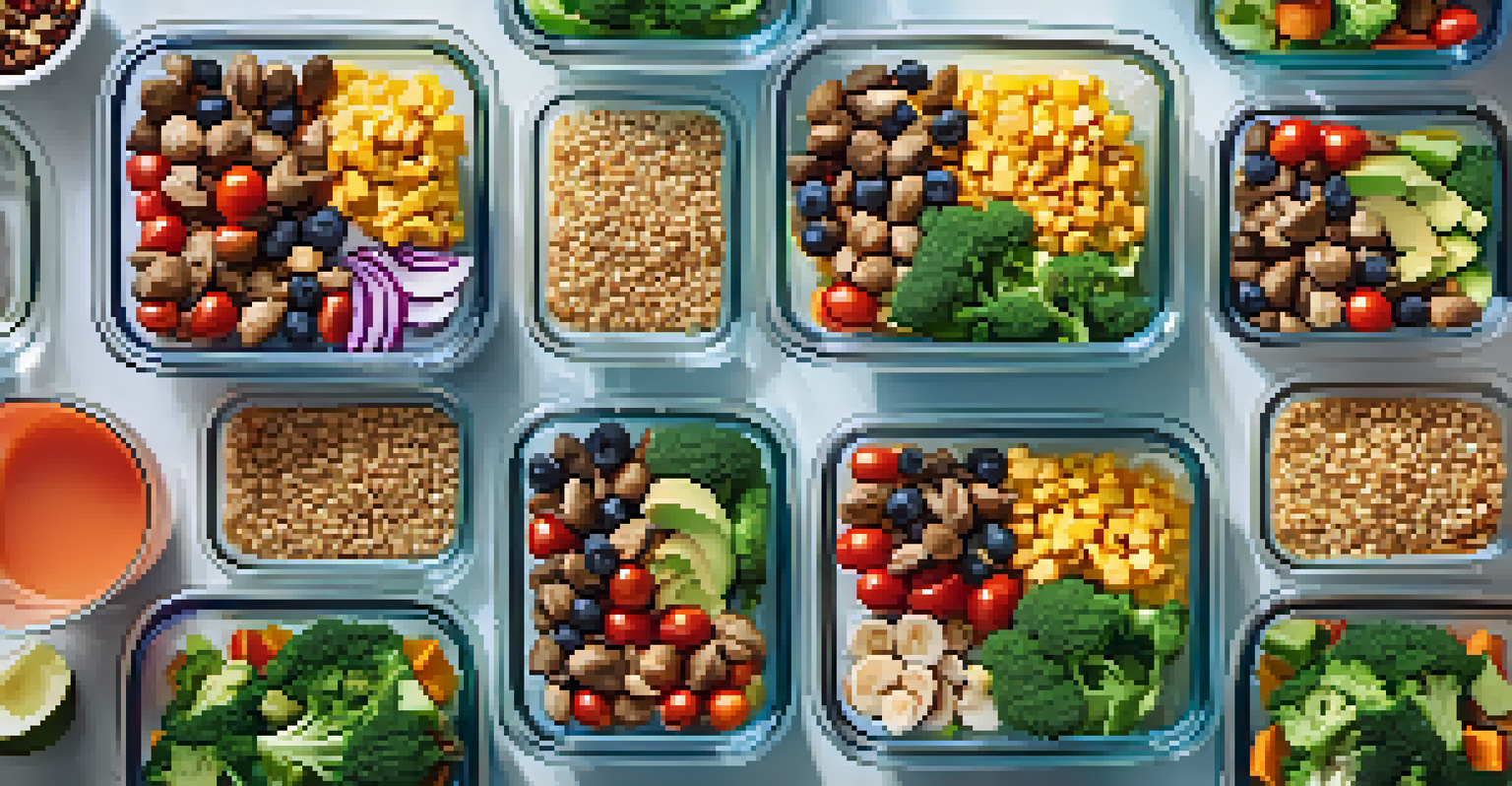The Importance of Portion Control in Healthy Cooking

What is Portion Control and Why Does It Matter?
Portion control refers to the practice of managing the amount of food we consume in a meal. It's about serving the right quantities to help maintain a balanced diet. By controlling portions, we can better regulate our intake of calories and nutrients.
You are what you eat, so don't be fast, cheap, easy, or fake.
Understanding portion sizes helps us avoid overeating, which can lead to weight gain and other health issues. For example, a typical restaurant serving may be larger than a standard portion at home, often leading to unintentional excess. This is where awareness of portion control becomes crucial.
Ultimately, practicing portion control fosters mindful eating habits. It encourages us to pay attention to our hunger cues and helps us enjoy our food more fully, rather than mindlessly consuming large amounts.
The Health Benefits of Portion Control
One of the primary health benefits of portion control is weight management. Eating appropriate portions can help prevent excessive calorie intake, making it easier to maintain or lose weight. Studies show that those who practice portion control tend to have healthier body weights.

Additionally, portion control can improve digestion. Overeating can lead to discomfort and digestive issues. By eating smaller, more manageable portions, our bodies can process food more efficiently and comfortably.
Portion Control Aids Weight Management
Practicing portion control helps regulate calorie intake, which is essential for maintaining or losing weight.
Finally, portion control supports balanced nutrition. It encourages us to include a variety of food groups in our meals, ensuring we get the vitamins and minerals our bodies need. This balanced approach can lead to long-term health benefits.
Portion Control and Meal Planning
Meal planning is a powerful tool that pairs well with portion control. By planning our meals ahead of time, we can better gauge how much food we need for the week. This not only saves time but also helps in controlling portions at each meal.
The food you eat can be either the safest and most powerful form of medicine or the slowest form of poison.
When we plan, we can create a grocery list that reflects the portions we intend to consume. This minimizes impulse buys and reduces food waste, as we’re less likely to over-purchase items we don’t need. Think of it as a roadmap to your dietary goals.
Moreover, meal prep allows for pre-portioned servings, making it easier to stick to healthy eating habits. By having our meals ready in appropriate portions, we can grab and go without the temptation to overindulge.
Tips for Practicing Portion Control at Home
One effective tip for practicing portion control is using smaller plates and bowls. The visual trick of a full plate can lead to feelings of satisfaction without the need for larger servings. It's amazing how much our perceptions can impact our eating habits!
Another strategy is to measure out serving sizes, especially for things like grains or snacks. This might seem tedious at first, but it helps establish a clear understanding of appropriate portions. Over time, you’ll develop a better intuition for serving sizes.
Mindful Eating Enhances Enjoyment
By paying attention to portion sizes, individuals can enjoy their meals more fully and avoid mindless overeating.
Lastly, be mindful of distractions during meals. Eating while watching TV or scrolling through your phone can lead to mindless eating. By focusing on the meal itself, you can tune into your hunger and fullness cues, making portion control easier.
Understanding Food Labels for Portion Control
Food labels are a valuable resource for understanding portion sizes. They provide information on serving sizes, calories, and nutrients, helping us make informed choices. Learning to read these labels can significantly enhance our ability to practice portion control.
For instance, a snack may appear healthy, but if the serving size is small and packed with calories, it can be easy to overeat. By familiarizing ourselves with the serving sizes listed, we can better assess how much we should actually consume.
Additionally, understanding food labels allows us to compare similar products. This helps us choose options that align with our nutritional goals, ensuring we’re not just mindful of our portions but also of the quality of food we are eating.
Portion Control in Social Settings
Navigating portion control in social settings can be challenging but is entirely manageable. When dining out or attending a gathering, it’s essential to be mindful of portion sizes. Start by filling your plate with smaller portions and savoring each bite.
Another helpful tactic is to share dishes with others. This not only encourages smaller servings but also allows you to enjoy a variety of flavors without overdoing it. Sharing can transform a meal into a social experience while keeping your portions in check.
Meal Planning Supports Healthy Portions
Planning meals in advance allows for better portion control and reduces the chances of over-purchasing or food waste.
Lastly, don’t be afraid to listen to your body. If you’re feeling full, it’s okay to stop eating, even if there’s food left on your plate. Being assertive about your needs can make a significant difference in your portion control efforts.
Long-Term Success with Portion Control
Achieving long-term success with portion control is about building sustainable habits. Start small by incorporating one or two strategies into your daily routine, rather than overhauling everything at once. It’s often the small changes that lead to lasting results.
Tracking your food intake can also be beneficial. Keeping a food diary or using an app helps you stay accountable, making it easier to recognize patterns in your eating habits. This self-awareness is crucial for maintaining portion control.

Lastly, remember that portion control is not about deprivation; it’s about balance. Allow yourself occasional treats in moderation, which can keep you motivated and satisfied in your healthy eating journey.